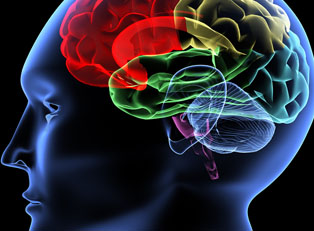Cerebral Palsy Information
"Cerebral" refers to the cerebrum, which is a part of the fore-brain together with the diencephalon. It is the most superior region of the central nervous system. Thus, cerebral palsy is a collective term for conditions that affect motor skills that cause physical disability in humans, early on in infancy and early childhood. The emergence of CP has to do with the failure of brain development or deterioration of one or several of its parts, which are responsible for motor activity. The first signs of lesions of the nervous system may be evident right after birth, and the signs of the cerebral palsy may be evident in infancy.
As a rule CP children are behind in the motor development, and acquire sitting, turning, crawling, and walking skills much later than regular kids. Even some elementary motions and movements may present a problem for these children. What are cerebral palsy causes? There are quite a few, and they impact the person in the course of pregnancy or during the delivery. Premature birth is a serious risk factor, since high risk of cerebral hemorrhage is involved, which in turn may aid in developing cerebral palsy. Insufficient oxygen flow to the brain also may result in the development of CP. Even though there are many reasons for its development, in many cases it's impossible to pin down the actual reason for the condition.
Cerebral Palsy Symptoms
Since cerebral palsy causes failure and abnormality in muscle tone, it becomes evident in its symptoms, from barely perceptible clumsiness to muscle tension, which disturbs the CP sufferer's movement of feet and hands, and could bind them to a wheelchair. The severity of abnormalities has largely to do with brain damage. These symptoms may vary from rather insignificant, and visible only to professionals, to rather obvious for parents and other people around such children. As a rule, CP is not as visible in early childhood, but it becomes more evident the more developed the nervous system becomes. Some symptoms of early development of cerebral palsy may include prevailing one-sidedness (the use of one arm and dominant pressure on one foot (whether right or left side).
It displays weakness and pathologic muscle tone of one particular side. Muscles may either be too tense, or too relaxed (hypotonic). Due to the increased tone, limbs may be found in strange positions. Most often, cerebral palsy causes pathologic movements, where motions are abnormally abrupt and sudden or slow and worm-like. Skeletal deformations may also be considered as symptoms of cerebral palsy. If left uncorrected, it may cause scoliosis. Not always, but not infrequently nevertheless, cerebral palsy causes mental retardation. Some physical symptoms may include cramps, convulsions, speech impediments, problems with teeth, problems with swallowing, deafness, eyesight disorder, bladder and bowel control, etc.
Cerebral Palsy Treatment
CP treatment is a long multi-stage process that requires much patience and willpower, since a great deal of what has been learned and practiced needs to be unlearned and learned anew. Cerebral palsy treatment includes three stages, preliminary, preparatory and main stage. The preliminary stage is responsible for the preparation of the body for intense physical trainings, new schedule, and cleansing of the body of all toxins accumulated in the course of medical treatment; it lasts for 2-4 weeks. Preparatory is the most intense and complex stage, where muscle tension which cerebral palsy causes, is totally and completely worked on and removed. The final, main, stage has to do with learning to walk and move anew and keep balance, in practice forgetting and leaving behind that, which cerebral palsy causes abnormal motor functions.





